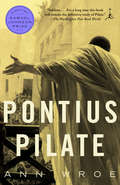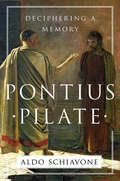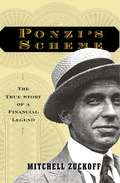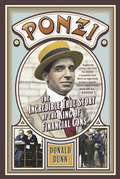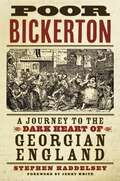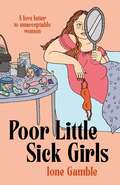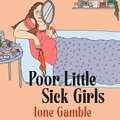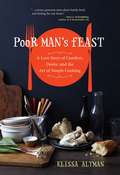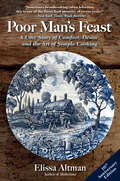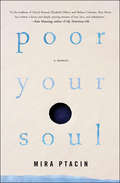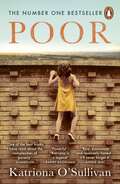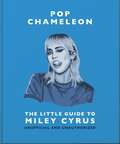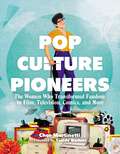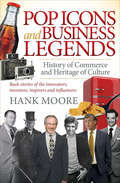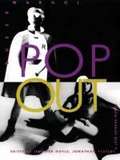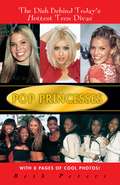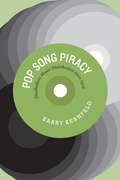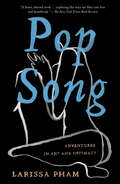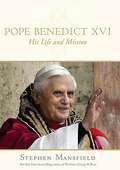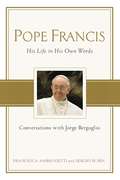- Table View
- List View
Pontius Pilate
by Ann WroeThe foil to Jesus, the defiant antihero of the Easter story, mocking, skeptical Pilate is a historical figure who haunts our imagination. For some he is a saint, for others the embodiment of human weakness, an archetypal politician willing to sacrifice one man for the sake of stability. In this dazzlingly conceived biography, a finalist for the Samuel Johnson Prize, Ann Wroe brings man and myth to life. Working from classical sources, she plunges us into the world of biblical Judaea under the reign of the erratic and licentious emperor Tiberius and lets us see the trial of Jesus, in all its confusion, from the point of view of his executioner.
Pontius Pilate: Deciphering a Memory
by Aldo Schiavone Jeremy CardenA world-renowned classicist presents a groundbreaking biography of the man who sent Jesus of Nazareth to the Cross. The Roman prefect Pontius Pilate has been cloaked in rumor and myth since the first century, but what do we actually know of the man who condemned Jesus of Nazareth to the Cross? In this breakthrough, revisionist biography of one of the Bible’s most controversial figures, Italian classicist Aldo Schiavone explains what might have happened in that brief meeting between the governor and Jesus, and why the Gospels—and history itself—have made Pilate a figure of immense ambiguity. Pontius Pilate lived during a turning point in both religious and Roman history. Though little is known of the his life before the Passion, two first-century intellectuals—Flavius Josephus and Philo of Alexandria—chronicled significant moments in Pilate’s rule in Judaea, which shaped the principal elements that have come to define him. By carefully dissecting the complex politics of the Roman governor’s Jewish critics, Schiavone suggests concerns and sensitivities among the people that may have informed their widely influential claims, especially as the beginnings of Christianity neared. Against this historical backdrop, Schiavone offers a dramatic reexamination of Pilate and Jesus’s moment of contact, indicating what was likely said between them and identifying lines of dialogue in the Gospels that are arguably fictive. Teasing out subtle but significant contradictions in details, Schiavone shows how certain gestures and utterances have had inestimable consequences over the years. What emerges is a humanizing portrait of Pilate that reveals how he reacted in the face of an almost impossible dilemma: on one hand wishing to spare Jesus’s life and on the other hoping to satisfy the Jewish priests who demanded his execution. Simultaneously exploring Jesus’s own thought process, the author reaches a stunning conclusion—one that has never previously been argued—about Pilate’s intuitions regarding Jesus. While we know almost nothing about what came before or after, for a few hours on the eve of the Passover Pilate deliberated over a fate that would spark an entirely new religion and lift up a weary prisoner forever as the Son of God. Groundbreaking in its analysis and evocative in its narrative exposition, Pontius Pilate is an absorbing portrait of a man who has been relegated to the borders of history and legend for over two thousand years.
Ponzi's Scheme: The True Story of a Financial Legend
by Mitchell ZuckoffIt was a time when anything seemed possible--instant wealth, glittering fame, fabulous luxury--and for a run of magical weeks in the spring and summer of 1920, Charles Ponzi made it all come true. Promising to double investors' money in three months, the dapper, charming Ponzi raised the "rob Peter to pay Paul" scam to an art form. At the peak of his success, Ponzi was raking in more than $2 million a week at his office in downtown Boston. Then his house of cards came crashing down ...
Ponzi: The Incredible True Story of the King of Financial Cons
by Donald DunnJust who was the man whose name has become synonymous with the classic “rob-Peter-to-pay-Paul” scam in which money from new investors is used to reward earlier ones? In December 1919, he was an unknown thirty-eight-year-old, self-educated Italian immigrant with a borrowed two-hundred dollars in his pocket. Six months later, he was Boston’s famed “wizard of finance,” lionized by the public and politicians alike. Based on exclusive interviews with people who knew Charles Ponzi, lent him their money, and exposed him, Donald Dunn’s Ponzi recreates both one of America’s most notorious and colorful financial con artists and the mad money-hungry era in which he thrived.
Poor Bickerton: A Journey to the Dark Heart of Georgian England
by Jerry White Stephen Haddelsey‘An adroit, intelligent and painstaking social history … Poor Bickerton offers us a luxurious tapestry from which everyone interested in English social history in the late-Georgian period can learn something new and surprising.’ – Professor Jerry White, author of London in the Eighteenth Century: A Great and Monstrous ThingOn 8 October 1833, Coroner Thomas Higgs opened an inquest into the death of John Bickerton, an elderly eccentric who, despite rumours of his wealth and high connections, had died in abject squalor, ‘from the want of the common necessaries of life’.Over the coming hours, Higgs and his jury would unpick the details of Bickerton’s strange, sad story: a story that began with comparative wealth, included education at Oxford and the Inns of Court, and brought him to the attention of two sitting prime ministers, but which descended into madness, imprisonment, mockery and starvation.Using Bickerton’s life as a thread around which to weave his narrative, historian Stephen Haddelsey explores the lives of the down-and-outs and rejects of Georgian and Regency England, including debtors, criminals and the insane. For anyone fascinated by this era of balls and intrigue, of Lord Byron and mad King George, here a world altogether grittier than that to be found in the novels of Jane Austen is revealed in all its lurid detail.
Poor Little Sick Girls: A love letter to unacceptable women
by Ione Gamble'Incredible insight with a transgressive, witty, spirit.' COURTNEY LOVE'The most sensational read of 2022!' GEMMA COLLINS'A breath of fresh air... I want so many people to read this!' TRAVIS ALABANZA'Visionary' VIV ALBERTINEA STYLIST MUST-READ FOR 2022Wellness is oppressive, self-love is a trap, hustling is a health risk and it's all the patriarchy's fault. Poor Little Sick Girls is THE book for femmes who are online and want more from activism and life.Ione Gamble never imagined that entering adulthood would mean being diagnosed with an incurable illness. Watching identity politics become social media fodder from the confines of her sickbed Ione began to pick apart our obsession with self-care, personal branding, productivity and #LivingYourBestLife. Using her experience with disability to cast a fresh gaze on the particularly peculiar cultural moment in which young women find themselves, Poor Little Sick Girls explores the pressures faced - as well as the power of existing as - a chronically ill, overweight, and unacceptable woman in our current era of empowerment.Founder of Polyester zine and a host of The Polyester Podcast, Ione has been named one of fifteen coolest young Londoners by The Evening Standard, and a 2019 New Debutante in Tatler Magazine. If you love Trick Mirror, Feminists Don't Wear Pink and Hood Feminism,you don't want to miss this book.
Poor Little Sick Girls: A love letter to unacceptable women
by Ione Gamble'Incredible insight with a transgressive, witty, spirit.' COURTNEY LOVE'The most sensational read of 2022!' GEMMA COLLINS'A breath of fresh air... I want so many people to read this!' TRAVIS ALABANZA'Visionary' VIV ALBERTINEA STYLIST MUST-READ FOR 2022Wellness is oppressive, self-love is a trap, hustling is a health risk and it's all the patriarchy's fault. Poor Little Sick Girls is THE book for femmes who are online and want more from activism and life.Ione Gamble never imagined that entering adulthood would mean being diagnosed with an incurable illness. Watching identity politics become social media fodder from the confines of her sickbed Ione began to pick apart our obsession with self-care, personal branding, productivity and #LivingYourBestLife. Using her experience with disability to cast a fresh gaze on the particularly peculiar cultural moment in which young women find themselves, Poor Little Sick Girls explores the pressures faced - as well as the power of existing as - a chronically ill, overweight, and unacceptable woman in our current era of empowerment.Founder of Polyester zine and a host of The Polyester Podcast, Ione has been named one of fifteen coolest young Londoners by The Evening Standard, and a 2019 New Debutante in Tatler Magazine. If you love Trick Mirror, Feminists Don't Wear Pink and Hood Feminism,you don't want to miss this book.
Poor Little Sick Girls: A love letter to unacceptable women
by Ione Gamble'Incredible insight with a transgressive, witty, spirit.' COURTNEY LOVE'The most sensational read of 2022!' GEMMA COLLINS'A breath of fresh air... I want so many people to read this!' TRAVIS ALABANZA'Visionary' VIV ALBERTINEA STYLIST MUST-READ FOR 2022Wellness is oppressive, self-love is a trap, hustling is a health risk and it's all the patriarchy's fault. Poor Little Sick Girls is THE book for femmes who are online and want more from activism and life.Ione Gamble never imagined that entering adulthood would mean being diagnosed with an incurable illness. Watching identity politics become social media fodder from the confines of her sickbed Ione began to pick apart our obsession with self-care, personal branding, productivity and #LivingYourBestLife. Using her experience with disability to cast a fresh gaze on the particularly peculiar cultural moment in which young women find themselves, Poor Little Sick Girls explores the pressures faced - as well as the power of existing as - a chronically ill, overweight, and unacceptable woman in our current era of empowerment.Founder of Polyester zine and a host of The Polyester Podcast, Ione has been named one of fifteen coolest young Londoners by The Evening Standard, and a 2019 New Debutante in Tatler Magazine. If you love Trick Mirror, Feminists Don't Wear Pink and Hood Feminism,you don't want to miss this book.
Poor Man's Feast
by Elissa AltmanFrom James Beard Award-winning writer Elissa Altman comes a story that marries wit to warmth, and flavor to passion. Born and raised in New York to a food-phobic mother and food-fanatical father, Elissa was trained early on that fancy is always best. After a childhood spent dining everywhere from Le Pavillion to La Grenouille, she devoted her life to all things gastronomical, from the rare game birds she served at elaborate dinner parties in an apartment so tiny that guests couldn't turn around to the eight timbale molds she bought while working at Dean & DeLuca, just so she could make tall food.But love does strange things to people, and when Elissa met Susan -- a small-town Connecticut Yankee with parsimonious tendencies and a devotion to simple living -- it would change Elissa's relationship with food, and the people who taught her about it, forever. With tender and often hilarious honesty (and 27 delicious recipes), Poor Man's Feast is a universal tale of finding sustenance and peace in a world of excess and inauthenticity, and shows us how all our stories are inextricably bound up with what, and how, we feed ourselves and those we love.
Poor Man's Feast
by Elissa AltmanBased on the James Beard Award-Winning BlogBorn and raised in New York to a food-phobic mother and a food-fanatical father, Elissa learned early on that fancy is always best. After a childhood spent dining at fine establishments, from Le Pavillon to La Grenouille, she devoted her life to all things gastronomical. She served rare game birds at elaborate dinner parties in an apartment so tiny that the guests couldn't turn around and bought eight timbale molds while working at Dean & DeLuca, just to make her food tall.Then, Elissa met and fell in love with Susan--a frugal, small-town Connecticut Yankee with a devotion to simple living--and it changed her relationship with food, and the people who taught her about it, forever.Told with tender and often hilarious honesty, and filled with twenty-six delicious recipes, Poor Man's Feast is a tale of finding sustenance and peace in a world of excess and inauthenticity, demonstrating how all our stories are inextricably bound up with how we feed ourselves and those we love.
Poor Man's Feast: A Love Story of Comfort, Desire, and the Art of Simple Cooking
by Elissa AltmanBased on the James Beard Award-Winning Blog Born and raised in New York to a food-phobic mother and a food-fanatical father, Elissa learned early on that fancy is always best. After a childhood spent dining at fine establishments, from Le Pavillon to La Grenouille, she devoted her life to all things gastronomical. She served rare game birds at elaborate dinner parties in an apartment so tiny that the guests couldn't turn around and bought eight timbale molds while working at Dean & DeLuca, just to make her food tall. Then, Elissa met and fell in love with Susan--a frugal, small-town Connecticut Yankee with a devotion to simple living--and it changed her relationship with food, and the people who taught her about it, forever. Told with tender and often hilarious honesty, and filled with twenty-six delicious recipes, Poor Man's Feast is a tale of finding sustenance and peace in a world of excess and inauthenticity, demonstrating how all our stories are inextricably bound up with how we feed ourselves and those we love.Includes a preview of Elissa Altman's memoir, Treyf: My Life as an Unorthodox Outlaw
Poor Man's Feast: A Love Story of Comfort, Desire, and the Art of Simple Cooking
by Elissa Altman&“[A] smart yet tender tale. . . . Sometimes heartbreaking, often hilarious . . . one of the finest food memoirs of recent years.&” —The New York Times Book Review For a woman raised by a weight-obsessed mother and a father who rebelled by sneaking his daughter out to lavish meals at such fine dining establishments as Le Pavillon and La Grenouille, food could be a fraught proposition. Not that this stopped Elissa Altman from pursuing a culinary career. Everything Elissa cooked was inspired by the French haute cuisine she once secretly enjoyed with her dad, from the rare game birds she served at extravagant dinner parties held in her tiny New York City apartment to the eight timbale molds she purchased from Dean & Deluca, just so she could make her food tall. All that elegance was called into question when Elissa fell in love with Susan, a small-town woman whose idea of fine dining was a rustic meal served on her best tag sale TV tray. Susan&’s devotion to simple living astounded Elissa, even as it changed the way she thought about food—and the family who taught her everything she understood about it—forever. Based on the James Beard Award–winning blog and filled with twenty-six delicious recipes, Poor Man&’s Feast is one woman&’s achingly honest, often uproarious journey to making peace with food and finding lasting love. &“A brave, generous story about family, food, and finding the way home.&” —Molly Wizenberg, New York Times–bestselling author of A Homemade Life &“Luminous writing.&” —Publishers Weekly &“Reminiscent of Elizabeth David, M. F. K. Fisher, A. J. Liebling . . . reflective of Laurie Colwin and her praise of simple, home-cooked, &‘real&’ food.&” —New York Journal of Books &“A beautiful story.&” —Deborah Madison, James Beard Award–winning author of Vegetarian Cooking for Everyone
Poor Richard
by James DaughertyThis lively text exemplifies both the man and the artist. Benjamin Franklin lived in turbulent times and met those times head-on with passion and gusto. James Daugherty—ever the patriot himself—has captured that essential nature of Franklin in his energetic and dramatic three-color lithographs that reveal the neophyte as he faces the fresh soil of a young nation filled with optimism and promise. From his Quaker childhood to his early days as printer's apprentice to runaway, to stranger in the City of Brotherly Love, to the "Water American" in London, Ben's youth was filled with adventures and challenges that taught him invaluable lessons about human nature. These lessons would serve him well as he grew to be a leader of the young colonies as they faced the tyranny of Britain. As a leader in the American Revolution he was indispensable as an ambassador to England and later France where he won the hearts of the nation by his simple Quaker wisdom and geniality. All these things were accomplished while he pursued his interests as scientist, inventor, and prolific author. In everything he did, Franklin was always compelled by how he might best serve his fellow man.
Poor Your Soul: A Memoir
by Mira PtacinPoor Your Soul--moving, wise, and passionately written--is a beautiful reflection on sexuality, free will, and the fierce bonds of family.At twenty-eight, Mira Ptacin discovered she was pregnant. Though it was unplanned, she embraced the idea of starting a family and became engaged to Andrew, the father. Five months later, an ultrasound revealed that her child would be born with a constellation of birth defects and no chance of survival outside the womb. Mira was given three options: terminate the pregnancy, induce early delivery, or wait and inevitably miscarry.Mira's story is paired with that of her mother, who emigrated from Poland to the United States, and who also experienced grievous loss when her only son was killed by a drunk driver. These deftly interwoven stories offer a picture of mother and daughter finding strength in themselves and each other in the face of tragedy.From the Hardcover edition.family, human sexuality, and free will.From the Hardcover edition.
Poor: Grit, courage, and the life-changing value of self-belief
by Katriona O'SullivanThe No. 1 BestsellerBiography of the Year, Irish Book Awards 2023The Last Word Listeners' Choice Award, Irish Book Awards 2023'One of the best [books] I have read about the complexities of poverty . . . one of the most remarkable people you will ever meet' GuardianLike young girls everywhere Katriona O’Sullivan grew up bright, enthusiastic, curious. But she was also surrounded by abject poverty and chaos, and after she became pregnant and homeless at 15, what followed was five years of barely surviving. Yet today Katriona is an award-winning academic whose work explores barriers to education for girls like her.What set Katriona on this unexpected path were the mentors and supporters who truly saw her. The teachers who showed her how to wash in the school toilets or turned up at her door to convince her to sit at least one GCSE. The community worker who encouraged her to apply for training schemes. The friend who introduced Katriona to Trinity College’s access program while she was a cleaner. Simple acts that would help her turn her life around.Told with warmth, clarity and compassion – compassion for her parents, for her younger self, for others – Poor is both an astonishing personal testimony and an impassioned plea for the future of our children.‘Powerful – Katriona is a legend’ Barry Keoghan‘Raw, passionate and resolutely honest – I’ll never forget it’ Annie Mac'Full of insight . . . so important' Fi Glover, Times Radio 'I read poor in one sitting I found it so compelling . . . moving, uplifting, brave, heroic' Nuala McGovern, Woman's Hour, BBC Radio Four'Moving, funny, brave and original - just like the author . . . absolutely incredible' Roísín Ingle, Irish Times Women's Podcast‘One of the books of the year’ Patrick Kielty, Late Late Show, RTÉ One'One of the most important books I have ever read … a beautiful telling of determination despite the odds' Lynn Ruane, Irish Times 'Fearless, funny and searingly honest' Adil Ray OBE'Raw and remarkable' Irish Independent 'A book of empowerment and hope' Patricia Scanlan‘Remarkable . . . a vivid retelling of Katriona flourishing, despite her beginnings’ BBC News West MidlandsNumber 1 bestseller, Irish Times, March 2024
Pop Chameleon: The Little Guide to Miley Cyrus
by Orange Hippo!In February 2024, America's favourite wild child, Miley Cyrus received recognition from her peers, finally, after 15 years. With two Grammy Awards, over 20 million albums and 55 million singles sold worldwide and a wardrobe full of iconic outfits, Miley is now a pop chameleon equal to her idols Madonna, Dolly Parton and Debbie Harry, as well as an inspiring feminist role model to her global fanbase and a leading female songwriter willing to break all the industry rules.This Little Guide to Miley Cyrus is packed with all the wonderful wit, wisdom and wisecracks her fans have come to expect... and a whole lot more. Taken from interviews across her entire career, this tiny tome reveals the real Miley Cyrus, one candid, controversial and classic quote at a time."I'm introducing my audience, my generation, to everything that inspired me and created this cocktail of chaos that I am."Miley, on Plastic Hearts, interview with Brittany Spanos, Rolling Stone, December 4, 2020."I don't want, in my life ever, some prince dude to come save me. I don't need to be saved. I'm my own person. I'm strong."Miley, on not need saving by a man, interview with Marie Claire, December 3, 2015.Miley's birth name, given to her in 1992, was Destiny Hope. However, she legally changed her name to Miley in 2008. She chose Miley due to her childhood nickname - Smiley.Miley's 'Flowers', released in January 2023 became her biggest hit, and her first No.1 smash since 'Wrecking Ball' in 2013. 'Flowers' remains the the fastest song in Spotify's history to cross 100 million plays globally in seven days.
Pop Chameleon: The Little Guide to Miley Cyrus
by Orange Hippo!In February 2024, America's favourite wild child, Miley Cyrus received recognition from her peers, finally, after 15 years. With two Grammy Awards, over 20 million albums and 55 million singles sold worldwide and a wardrobe full of iconic outfits, Miley is now a pop chameleon equal to her idols Madonna, Dolly Parton and Debbie Harry, as well as an inspiring feminist role model to her global fanbase and a leading female songwriter willing to break all the industry rules.This Little Guide to Miley Cyrus is packed with all the wonderful wit, wisdom and wisecracks her fans have come to expect... and a whole lot more. Taken from interviews across her entire career, this tiny tome reveals the real Miley Cyrus, one candid, controversial and classic quote at a time."I'm introducing my audience, my generation, to everything that inspired me and created this cocktail of chaos that I am."Miley, on Plastic Hearts, interview with Brittany Spanos, Rolling Stone, December 4, 2020."I don't want, in my life ever, some prince dude to come save me. I don't need to be saved. I'm my own person. I'm strong."Miley, on not need saving by a man, interview with Marie Claire, December 3, 2015.Miley's birth name, given to her in 1992, was Destiny Hope. However, she legally changed her name to Miley in 2008. She chose Miley due to her childhood nickname - Smiley.Miley's 'Flowers', released in January 2023 became her biggest hit, and her first No.1 smash since 'Wrecking Ball' in 2013. 'Flowers' remains the the fastest song in Spotify's history to cross 100 million plays globally in seven days.
Pop Culture Pioneers: The Women Who Transformed Fandom in Film, Television, Comics, and More
by Cher MartinettiCelebrate the empowering and inspiring women who helped create, shape, and make pop culture great, from the creator of SYFY WIRE's FANGRRLS and the podcast "Forgotten Women of Genre"! In every medium in popular culture—from books, films, and video games to comics, television, and animation—women have been instrumental in creating and shaping the worlds, characters, and genres that we know and love. However, much of their hard work and innovation has gone largely unrecognized—until now. With a foreword by American Gods actress Yetide Badaki and essays exploring the history and transformation of pop culture's genres and mediums, Pop Culture Pioneers explores and pays respect to the women who played a crucial role in creating and influencing of some of the most famous worlds and characters in pop culture including:Directors & Producers like Karyn Kusama (Aeon Flux, Jennifer's Body), Denise Di Novi (co-producer of Batman Returns, The Nightmare Before Christmas), and Jean MacCurdy (producer of Batman: The Animated Series, Animaniacs)Writers & Editors like Jeanette Khan (editor and publisher of DC Comics), Alice Bradley Sheldon (writing as James Tiptree Jr.), and Alison Bechdel (Fun Home)Animators & Artists like Rebecca Sugar (Steven Universe), Noelle Stevenson (She-Ra and the Princesses of Power) and Brenda Chapman (animator and director of Brave)As well as Marlene Clark (Blaxploitation actress), Roberta Williams (creator of the adventure game genre), Yvonne Blake (costume designer for Superman), Bonnie Erickson (co-creator of Miss Piggy), and many more.
Pop Icons and Business Legends: History of Commerce and Heritage of Culture
by Hank MooreA unique and fresh perspective on how to achieve business success based on the careers of modern history&’s greatest pop figures. Stroll through the past and discover the fusion of pop culture and business. From Walt Disney to Bill Gates, from Burt Bacharach to Howard Hughes, from Steven Spielberg to John D. Rockefeller, and from Col. Harland Sanders to Steve Jobs, this is the comprehensive study of pop icons, historical innovations, and business pioneers. In Pop Icons and Business Legends, legendary business advisor and former presidential speech writer Hank Moore embraces the past as a roadmap to the future. This is history, cultural enlightenment, and business innovation, all rolled in one, plus a dynamic panorama of non-profit and humanitarian contributions to society. &“How can one person with so much insight into cultural history and nostalgia be such a visionary of business and organizations? Hank Moore is one of the few who understands the connection.&” —Dick Clark, TV icon &“Hank Moore's Business Tree™ is the most original business model of the last 50 years.&” —Peter Drucker, business visionary
Pop Out: Queer Warhol
by Jennifer Doyle José Esteban Muñoz Jonathan FlatleyAndy Warhol was queer in more ways than one. A fabulous queen, a fan of prurience and pornography, a great admirer of the male body, he was well known as such to the gay audiences who enjoyed his films, the police who censored them, the gallery owners who refused to show his male nudes, and the artists who shied from his swishiness, not to mention all the characters who populated the Factory. Yet even though Warhol became the star of postmodernism, avant-garde, and pop culture, this collection of essays is the first to explore, analyze, appreciate, and celebrate the role of Warhol's queerness in the making and reception of his film and art. Ranging widely in approach and discipline, Pop Out demonstrates that to ignore Warhol's queerness is to miss what is most valuable, interesting, sexy, and political about his life and work.Written from the perspectives of art history, critical race theory, psychoanalysis, feminist theory, cinema studies, and social and literary theory, these essays consider Warhol in various contexts and within the history of the communities in which he figured. The homoerotic subjects, gay audiences, and queer contexts that fuel a certain fascination with Warhol are discussed, as well as Batman, Basquiat, and Valerie Solanas. Taken together, the essays in this collection depict Warhol's career as a practical social reflection on a wide range of institutions and discourses, including those, from the art world to mass culture, that have almost succeeded in sanitizing his work and his image.Contributors. Jennifer Doyle, Jonathan Flatley, Marcie Frank, David E. James, Mandy Merck, Michael Moon, José Esteban Muñoz, Eve Kosofsky Sedgwick, Brian Selsky, Sasha Torres, Simon Watney, Thomas Waugh
Pop Princesses
by Beth PetersTHE GIRL'S CLUBThey're young, they're beautiful, and they're changing the face of pop music with their dazzling talent and style!Christina Aguilera: This GENIE IN A BOTTLE is making all her wishes come true!Destiny's Child: THE WRITING'S ON THE WALL! With one Grammy nomination already, this group is headed for great things.Jessica Simpson: This teen has A HEART OF INNOCENCE and a voice like an angel.Blaque: TIME AFTER TIME, this group shows its got talent to spare.Mandy Moore: Her voice is sweeter than CANDY, but her attitude's all heat.From the Paperback edition.
Pop Song Piracy: Disobedient Music Distribution since 1929
by Barry KernfeldThe music industry’s ongoing battle against digital piracy is just the latest skirmish in a long conflict over who has the right to distribute music. Starting with music publishers’ efforts to stamp out bootleg compilations of lyric sheets in 1929, Barry Kernfeld’s Pop Song Piracy details nearly a century of disobedient music distribution from song sheets to MP3s. In the 1940s and ’50s, Kernfeld reveals, song sheets were succeeded by fake books, unofficial volumes of melodies and lyrics for popular songs that were a key tool for musicians. Music publishers attempted to wipe out fake books, but after their efforts proved unsuccessful they published their own. Pop Song Piracy shows that this pattern of disobedience, prohibition, and assimilation recurred in each conflict over unauthorized music distribution, from European pirate radio stations to bootlegged live shows. Beneath this pattern, Kernfeld argues, there exists a complex give and take between distribution methods that merely copy existing songs (such as counterfeit CDs) and ones that transform songs into new products (such as file sharing). Ultimately, he contends, it was the music industry’s persistent lagging behind in creating innovative products that led to the very piracy it sought to eliminate.
Pop Song: Adventures in Art & Intimacy
by Larissa Pham"A fresh, energetic voice with a brilliant mind to power it," brings readers an endlessly inventive, intimate, and provocative memoir-in-essays that celebrates the strange and exquisite state of falling in love--whether with a painting or a person--and interweaves incisive commentary on modern life, feminism, art and sex with the author's own experiences of obsession, heartbreak, and past trauma (Esmé Weijun Wang, New York Times bestselling author of The Collected Schizophrenias).Like a song that feels written just for you, Larissa Pham's debut work of nonfiction captures the imagination and refuses to let go. Pop Song is a book about love and about falling in love--with a place, or a painting, or a person--and the joy and terror inherent in the experience of that love. Plumbing the well of culture for clues and patterns about love and loss--from Agnes Martin's abstract paintings to James Turrell's transcendent light works, and Anne Carson's Eros the Bittersweet to Frank Ocean's Blonde--Pham writes of her youthful attempts to find meaning in travel, sex, drugs, and art, before sensing that she might need to turn her gaze upon herself. Pop Song is also a book about distances, near and far. As she travels from Taos, New Mexico, to Shanghai, China and beyond, Pham meditates on the miles we are willing to cover to get away from ourselves, or those who hurt us, and the impossible gaps that can exist between two people sharing a bed. Pop Song is a book about all the routes by which we might escape our own needs before finally finding a way home. There is heartache in these pages, but Pham's electric ways of seeing create a perfectly fractured portrait of modern intimacy that is triumphant in both its vulnerability and restlessness.
Pope Benedict XVI
by Stephen MansfieldWhile often regarded as a conservative influence on the church, the Pope and his story defy easy categorization, argues bestselling author Stephen Mansfield. John Paul became a priest only after attending an underground seminary during the Nazi occupation of Poland. To keep his national culture alive during those dark years, young Karol started an outlawed theater troupe. He became a poet and a playwright, and, even after gaining an international reputation as a theologian, he still kept the artist's touch. Mansfield vividly recalls the Pope as the churchman whose courage helped to bring down communism, as the world figure who visited his would-be assassin's prison cell to extend forgiveness, and as the theologically conservative icon who fought for the poor and against the corruptions of capitalism more than any other world leader of his time. He is the first pope to enter a synagogue, the first to apologize for the Holocaust, and the first to visit a concentration camp. What is certain, says Mansfield, is that Pope John Paul II has had a decisive impact on our times, and not only as a religious leader: He has shaped our world as a philosopher, a statesman, an artist, and a "great soul. " In Pope John Paul II, Mansfield examines the Pope's influence on the world specifically from the perspective of a non-Catholic-a committed Christian without fealty to Rome. Mansfield's academic depth, his poetic but widely accessible writing style, and his ability to render complex religious ideas understandable to the non-religious, lend his treatment of Pope John Paul II significance for readers of all philosophies and faiths.
Pope Francis
by Sergio Rubin Francesca AmbrogettiThe only authorised biography of Pope Francis I. Just who is Pope Francis, the first Latin American pope, the first Jesuit pope, and the first to take the name Francis? Elected in one of the shortest conclaves in history, the former Archbishop Jorge Mario Bergoglio of Argentina reveals, in a series of extensive interviews conducted over the course of two years, the very image of a humble priest, inspired teacher, and wise and adroit cardinal. Speaking spontaneously and intimately, Archbishop Bergoglio, now Pope Francis, covers topics as wide-ranging as his childhood, family life, and first job to discovering his calling and his early days in the seminary. The former archbishop was a teacher of psychology and literature until John Paul II consecrated him as a cardinal. He befriended writers like Jorge Luis Borges and cites Homer, Cervantes, and German and Italian poets with ease and offers genuinely interesting and nuanced thoughts about teaching. A learned and introspective man, he doesn't avoid the uncomfortable subjects: topics covered include the declining numbers of priests and nuns; celibacy; the sexual abuse scandals that have rocked the church; and his opinions about and experience with the military dictatorship of his own crisis riddled country. It also discusses the incredible role he played in the last conclave. In each stage of his life, we witness a man more interested in substance than style, one whose actions and words reflect his deeply-rooted humility. The book concludes with the Pope's own writings and reflections, full of wisdom and inspiration.
